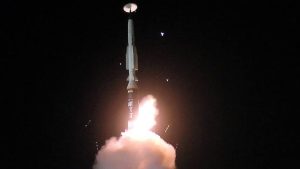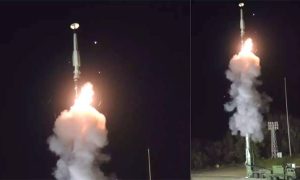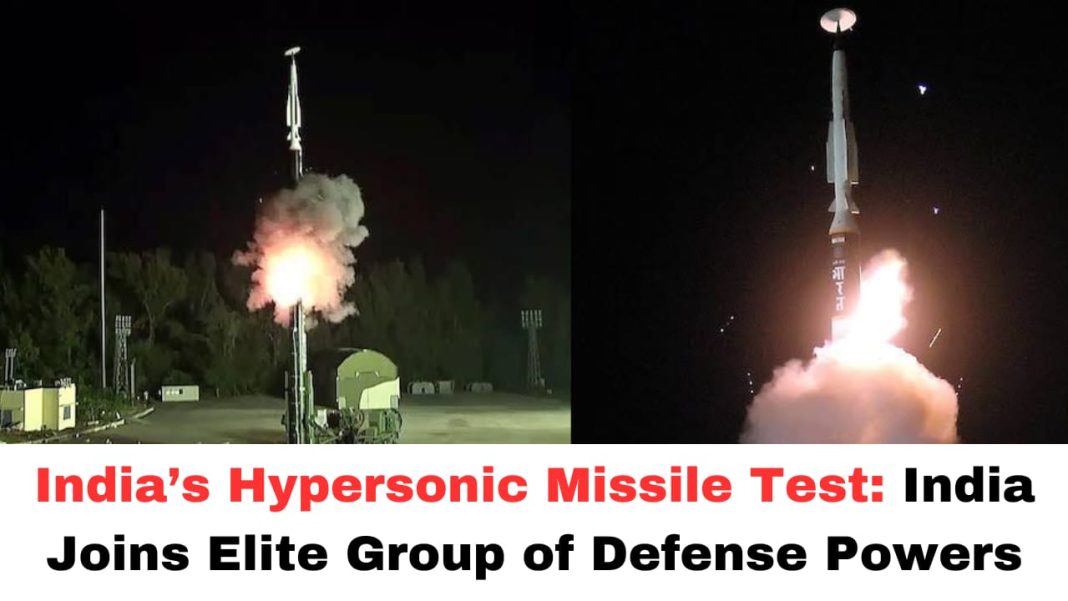Digital News Guru Technology Desk:
India marked a significant milestone in defense technology with the successful test of its first long-range hypersonic missile on November 16, 2024. Conducted from Dr. APJ Abdul Kalam Island off Odisha’s coast, this test signifies a major achievement for the Indian military and its research institutions, placing the country among a select group of nations with hypersonic weapon capabilities. The missile, developed by the Defence Research and Development Organisation (DRDO) in partnership with industry leaders, underscores India’s growing prowess in advanced military technology and its ambitions to strengthen national security.
What Are Hypersonic Missiles?
Hypersonic missiles are weapons capable of traveling at speeds greater than Mach 5—five times the speed of sound—while maintaining exceptional maneuverability. Unlike traditional ballistic missiles, which follow a fixed trajectory, hypersonic weapons can evade modern air defense systems due to their speed and ability to alter course mid-flight. This makes them a critical component of next-generation warfare.

The missile tested by India is reportedly capable of delivering payloads over distances exceeding 1,500 kilometers (930 miles) with pinpoint accuracy. This long-range capability adds to its strategic value, particularly in a region marked by geopolitical tensions.
Hypersonic Missile Test: Details
The test was conducted under rigorous conditions, with the missile’s performance closely monitored by tracking systems located along its flight path. Downrange ship stations confirmed the success of terminal maneuvers, which are essential for ensuring accuracy in real-world scenarios. Defense Minister Rajnath Singh hailed the test as a “historic moment” for India, highlighting the country’s technological progress in defense and its commitment to self-reliance.
The missile’s development aligns with India’s broader vision of achieving indigenous capabilities in critical defense technologies. The DRDO has been a driving force in this effort, developing advanced systems in collaboration with private industry to meet the demands of modern warfare.
Strategic Implications
The successful test of a hypersonic missile has significant implications for India’s defense strategy. Hypersonic weapons are considered a game-changer in military technology due to their ability to strike targets quickly and evade interception. By joining the ranks of nations like the United States, Russia, and China, India has taken a crucial step toward strengthening its deterrence capabilities.
This development is particularly relevant given the geopolitical context in South Asia. China has been a pioneer in hypersonic technology, reportedly deploying such weapons in its arsenal. The introduction of India’s hypersonic missile adds a new dimension to the strategic balance in the region, enhancing its ability to respond to emerging threats.

Furthermore, this capability aligns with India’s focus on countering Pakistan’s missile advancements. By incorporating hypersonic technology into its arsenal, India not only enhances its defense but also reinforces its position as a key player in global military innovation.
Global Context: The Hypersonic Arms Race
The test comes amid an ongoing global arms race to develop hypersonic weapons. These systems are seen as critical to maintaining a competitive edge in modern warfare. Nations such as the United States, Russia, and China have been investing heavily in hypersonic programs, with each country seeking to outpace the others in terms of speed, range, and accuracy.
Russia has already deployed hypersonic missiles in combat scenarios, while China has showcased its advancements with the DF-ZF glide vehicle. The United States, too, has been testing hypersonic systems as part of its effort to modernize its military capabilities. India’s entry into this elite club underscores its growing stature as a technologically advanced military power.
Challenges and Opportunities
While the successful test is a significant achievement, developing hypersonic technology presents numerous challenges. Hypersonic systems require advanced materials capable of withstanding extreme temperatures, precision engineering for flight control, and sophisticated tracking mechanisms. India’s ability to overcome these technical hurdles reflects the growing competence of its defense research institutions.
The successful test also opens up opportunities for India to collaborate with like-minded nations on hypersonic research and development. Partnerships with allies such as the United States, France, or Australia could accelerate advancements and bolster India’s position in the global defense market.
Reactions and Future Prospects
The announcement of the test has been met with widespread acclaim domestically. Defense experts have praised the DRDO’s achievement, noting that it represents a significant leap forward in India’s military capabilities. International observers have also recognized the test as a noteworthy development, though some have raised concerns about the potential for an arms race in the region.

Looking ahead, India plans to further develop its hypersonic capabilities, including testing variants with enhanced ranges and payloads. These advancements will be crucial for ensuring the country’s preparedness in an increasingly complex security environment.
Conclusion
The successful test of India’s first long-range hypersonic missile is a landmark achievement that underscores the country’s commitment to technological innovation and self-reliance in defense. As hypersonic weapons become a cornerstone of modern military strategy, India’s entry into this exclusive club positions it as a formidable player on the global stage.
With ongoing research and development, India is poised to further enhance its defense capabilities, ensuring that it remains prepared to meet future challenges. The hypersonic missile test is not just a technical triumph but also a testament to India’s resolve to safeguard its sovereignty and strengthen its role in global security dynamics.
You May Also Read: Gautam Adani charged by US in $265 million bribery case








